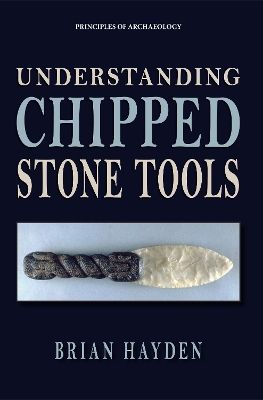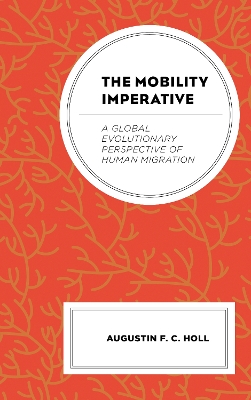Understanding Chipped Stone Tools
 portes grátis
portes grátis
Understanding Chipped Stone Tools
Hayden, Brian
Eliot Werner Publications Inc
09/2022
160
Mole
Inglês
9781734281866
15 a 20 dias
256
Descrição não disponível.
1 - Perspectives on Lithics
Perspectives: Old, New, and From the Bottom Up
What Do You Want To Find Out?
Experiential and Experimental Archaeology
My Background
Organization of This Book
Exercise
Additional Readings
2 - Design Theory
Steps in Design Analysis
Design Theory in Practice
Constraints
The Importance of Quantity
Prestige Technologies
Exercise
Additional Readings
3 - Design Theory as Applied to Lithic Analysis
End Scrapers: A Specially Designed Tool Type
The Problem
Step 1: Dehairing and Removing the Epidermis
Step 2: Defleshing
Step 3: Removing the Inner Membrane
Step 4: Stretching and Working the Hide
Step 5: Abrading the Hide
Design Lessons from Making Buckskin
Deconstructing End Scrapers: The Design Factors
Material Constraints
Task Constraints
Size and Kinematic Constraints
Skill Constraints
Technological Constraints
Quantity
Size Matters
Designing Hide-Scraping Tools
Blades and Reduction Strategies
Discussion
Exercise
Additional Readings
4 - Tier 1: Analyzing Stone Tools
Expedient, Extemporaneous, and Opportunistic Tool Use
The Nuts and Bolts of Analyzing Stone Tools: Tools and Debitage
An Artifact or Not an Artifact?
Flake Tools: The Six Sides of a Flake
Types of Edge Modification
Other Sources of Edge Modification
Unmodified Tools
Summary
Exercise
Additional Readings
5 - Tier 2: Basic Reduction Strategies and Specialized Types
Specialized Tools: Projectile Points
Spears or Arrows?
Consequences
Reduction Strategies
Hard Hammer Block Core Reduction
Blade Reduction
Bipolar Reduction
Bifacial Reduction
Levallois Reduction
Pressure Reduction
Summary
Exercise
Additional Readings
6 - Tier 3: Design Considerations Reliability
Maintainability
Versatility and Multifunctionality
Flexibility
Diversity
Other Design Considerations
Commentary
Identifying Tasks and Strategies
Types
Traditional Typologies
Contemporary Typologies
Exercise
Additional Readings
7 - Changes
Raw Materials
Geological Nomenclature versus Prehistoric Choices
Resharpening Strategies Over Time
The Oldawan
Acheulian Handaxes and Mousterian Levallois Flakes
Upper Paleolithic Blades and Bifaces
Mesolithic Microliths
Ground Stone Axes
Additional Readings
8 - Total Assemblages
Profile of the Keatley Creek Site
The Lithic Assemblage at Keatley Creek
The Block Core Strategy
Bifacial Reduction
Bipolar Reduction
Pressure Reduction
Grinding Reduction
9 - Precepts and Prospects
Getting Oriented
Prospects
Research Constraints
Additional Reading
Sources for Images
Glossary
Perspectives: Old, New, and From the Bottom Up
What Do You Want To Find Out?
Experiential and Experimental Archaeology
My Background
Organization of This Book
Exercise
Additional Readings
2 - Design Theory
Steps in Design Analysis
Design Theory in Practice
Constraints
The Importance of Quantity
Prestige Technologies
Exercise
Additional Readings
3 - Design Theory as Applied to Lithic Analysis
End Scrapers: A Specially Designed Tool Type
The Problem
Step 1: Dehairing and Removing the Epidermis
Step 2: Defleshing
Step 3: Removing the Inner Membrane
Step 4: Stretching and Working the Hide
Step 5: Abrading the Hide
Design Lessons from Making Buckskin
Deconstructing End Scrapers: The Design Factors
Material Constraints
Task Constraints
Size and Kinematic Constraints
Skill Constraints
Technological Constraints
Quantity
Size Matters
Designing Hide-Scraping Tools
Blades and Reduction Strategies
Discussion
Exercise
Additional Readings
4 - Tier 1: Analyzing Stone Tools
Expedient, Extemporaneous, and Opportunistic Tool Use
The Nuts and Bolts of Analyzing Stone Tools: Tools and Debitage
An Artifact or Not an Artifact?
Flake Tools: The Six Sides of a Flake
Types of Edge Modification
Other Sources of Edge Modification
Unmodified Tools
Summary
Exercise
Additional Readings
5 - Tier 2: Basic Reduction Strategies and Specialized Types
Specialized Tools: Projectile Points
Spears or Arrows?
Consequences
Reduction Strategies
Hard Hammer Block Core Reduction
Blade Reduction
Bipolar Reduction
Bifacial Reduction
Levallois Reduction
Pressure Reduction
Summary
Exercise
Additional Readings
6 - Tier 3: Design Considerations Reliability
Maintainability
Versatility and Multifunctionality
Flexibility
Diversity
Other Design Considerations
Commentary
Identifying Tasks and Strategies
Types
Traditional Typologies
Contemporary Typologies
Exercise
Additional Readings
7 - Changes
Raw Materials
Geological Nomenclature versus Prehistoric Choices
Resharpening Strategies Over Time
The Oldawan
Acheulian Handaxes and Mousterian Levallois Flakes
Upper Paleolithic Blades and Bifaces
Mesolithic Microliths
Ground Stone Axes
Additional Readings
8 - Total Assemblages
Profile of the Keatley Creek Site
The Lithic Assemblage at Keatley Creek
The Block Core Strategy
Bifacial Reduction
Bipolar Reduction
Pressure Reduction
Grinding Reduction
9 - Precepts and Prospects
Getting Oriented
Prospects
Research Constraints
Additional Reading
Sources for Images
Glossary
Este título pertence ao(s) assunto(s) indicados(s). Para ver outros títulos clique no assunto desejado.
Anthropology; Archaeology; Ground Stone Axes; Mesolithic Microliths; Upper Paleolithic Blades and Bifaces; Hide-Scraping Tools; lithic analysis
1 - Perspectives on Lithics
Perspectives: Old, New, and From the Bottom Up
What Do You Want To Find Out?
Experiential and Experimental Archaeology
My Background
Organization of This Book
Exercise
Additional Readings
2 - Design Theory
Steps in Design Analysis
Design Theory in Practice
Constraints
The Importance of Quantity
Prestige Technologies
Exercise
Additional Readings
3 - Design Theory as Applied to Lithic Analysis
End Scrapers: A Specially Designed Tool Type
The Problem
Step 1: Dehairing and Removing the Epidermis
Step 2: Defleshing
Step 3: Removing the Inner Membrane
Step 4: Stretching and Working the Hide
Step 5: Abrading the Hide
Design Lessons from Making Buckskin
Deconstructing End Scrapers: The Design Factors
Material Constraints
Task Constraints
Size and Kinematic Constraints
Skill Constraints
Technological Constraints
Quantity
Size Matters
Designing Hide-Scraping Tools
Blades and Reduction Strategies
Discussion
Exercise
Additional Readings
4 - Tier 1: Analyzing Stone Tools
Expedient, Extemporaneous, and Opportunistic Tool Use
The Nuts and Bolts of Analyzing Stone Tools: Tools and Debitage
An Artifact or Not an Artifact?
Flake Tools: The Six Sides of a Flake
Types of Edge Modification
Other Sources of Edge Modification
Unmodified Tools
Summary
Exercise
Additional Readings
5 - Tier 2: Basic Reduction Strategies and Specialized Types
Specialized Tools: Projectile Points
Spears or Arrows?
Consequences
Reduction Strategies
Hard Hammer Block Core Reduction
Blade Reduction
Bipolar Reduction
Bifacial Reduction
Levallois Reduction
Pressure Reduction
Summary
Exercise
Additional Readings
6 - Tier 3: Design Considerations Reliability
Maintainability
Versatility and Multifunctionality
Flexibility
Diversity
Other Design Considerations
Commentary
Identifying Tasks and Strategies
Types
Traditional Typologies
Contemporary Typologies
Exercise
Additional Readings
7 - Changes
Raw Materials
Geological Nomenclature versus Prehistoric Choices
Resharpening Strategies Over Time
The Oldawan
Acheulian Handaxes and Mousterian Levallois Flakes
Upper Paleolithic Blades and Bifaces
Mesolithic Microliths
Ground Stone Axes
Additional Readings
8 - Total Assemblages
Profile of the Keatley Creek Site
The Lithic Assemblage at Keatley Creek
The Block Core Strategy
Bifacial Reduction
Bipolar Reduction
Pressure Reduction
Grinding Reduction
9 - Precepts and Prospects
Getting Oriented
Prospects
Research Constraints
Additional Reading
Sources for Images
Glossary
Perspectives: Old, New, and From the Bottom Up
What Do You Want To Find Out?
Experiential and Experimental Archaeology
My Background
Organization of This Book
Exercise
Additional Readings
2 - Design Theory
Steps in Design Analysis
Design Theory in Practice
Constraints
The Importance of Quantity
Prestige Technologies
Exercise
Additional Readings
3 - Design Theory as Applied to Lithic Analysis
End Scrapers: A Specially Designed Tool Type
The Problem
Step 1: Dehairing and Removing the Epidermis
Step 2: Defleshing
Step 3: Removing the Inner Membrane
Step 4: Stretching and Working the Hide
Step 5: Abrading the Hide
Design Lessons from Making Buckskin
Deconstructing End Scrapers: The Design Factors
Material Constraints
Task Constraints
Size and Kinematic Constraints
Skill Constraints
Technological Constraints
Quantity
Size Matters
Designing Hide-Scraping Tools
Blades and Reduction Strategies
Discussion
Exercise
Additional Readings
4 - Tier 1: Analyzing Stone Tools
Expedient, Extemporaneous, and Opportunistic Tool Use
The Nuts and Bolts of Analyzing Stone Tools: Tools and Debitage
An Artifact or Not an Artifact?
Flake Tools: The Six Sides of a Flake
Types of Edge Modification
Other Sources of Edge Modification
Unmodified Tools
Summary
Exercise
Additional Readings
5 - Tier 2: Basic Reduction Strategies and Specialized Types
Specialized Tools: Projectile Points
Spears or Arrows?
Consequences
Reduction Strategies
Hard Hammer Block Core Reduction
Blade Reduction
Bipolar Reduction
Bifacial Reduction
Levallois Reduction
Pressure Reduction
Summary
Exercise
Additional Readings
6 - Tier 3: Design Considerations Reliability
Maintainability
Versatility and Multifunctionality
Flexibility
Diversity
Other Design Considerations
Commentary
Identifying Tasks and Strategies
Types
Traditional Typologies
Contemporary Typologies
Exercise
Additional Readings
7 - Changes
Raw Materials
Geological Nomenclature versus Prehistoric Choices
Resharpening Strategies Over Time
The Oldawan
Acheulian Handaxes and Mousterian Levallois Flakes
Upper Paleolithic Blades and Bifaces
Mesolithic Microliths
Ground Stone Axes
Additional Readings
8 - Total Assemblages
Profile of the Keatley Creek Site
The Lithic Assemblage at Keatley Creek
The Block Core Strategy
Bifacial Reduction
Bipolar Reduction
Pressure Reduction
Grinding Reduction
9 - Precepts and Prospects
Getting Oriented
Prospects
Research Constraints
Additional Reading
Sources for Images
Glossary
Este título pertence ao(s) assunto(s) indicados(s). Para ver outros títulos clique no assunto desejado.







